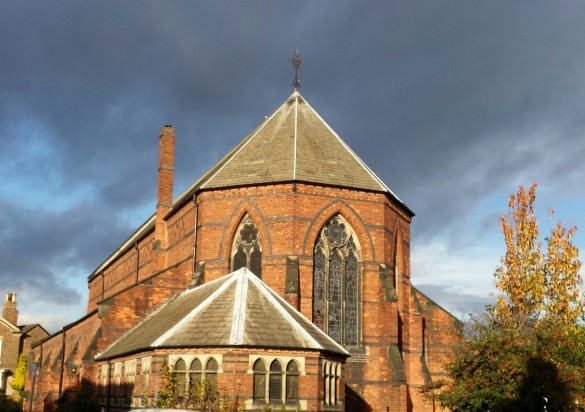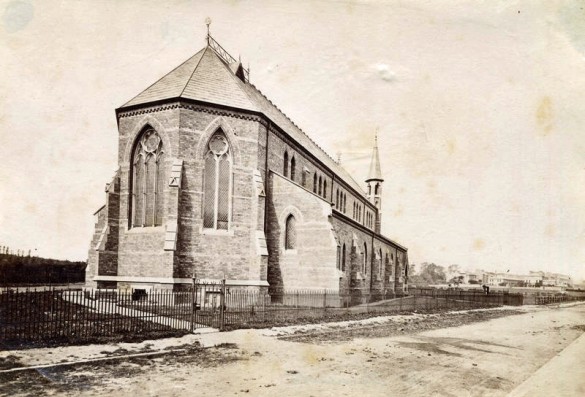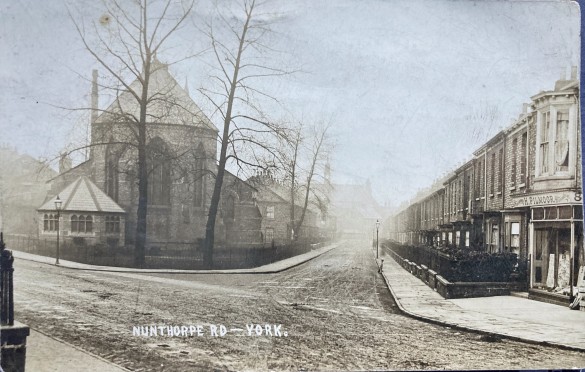14th September 2024




View navigation
14th September 2024
 This year, 2024, marks the 150th anniversary of the opening of St Clement’s Church on Scarcroft Road. This church, and its newly appointed rector, George Marsham Argles made a big impact on our local area.
This year, 2024, marks the 150th anniversary of the opening of St Clement’s Church on Scarcroft Road. This church, and its newly appointed rector, George Marsham Argles made a big impact on our local area. George Argles came from a background with a mixture of privilege and service. His family owned land in the Lake District and Northamptonshire, and his father had left an estate of £99,000, with George being one of the principal beneficiaries. His grandfather George Davys had lived at Kensington Palace as personal tutor to the young Princess Victoria, before he became Bishop of Peterborough. George Argles went to Harrow and graduated from Balliol College, Oxford.
George Argles came from a background with a mixture of privilege and service. His family owned land in the Lake District and Northamptonshire, and his father had left an estate of £99,000, with George being one of the principal beneficiaries. His grandfather George Davys had lived at Kensington Palace as personal tutor to the young Princess Victoria, before he became Bishop of Peterborough. George Argles went to Harrow and graduated from Balliol College, Oxford.  The new church (pictured here in 1880) was funded mostly by donations, with a small amount coming from church grants, and cost around £3,800. The tradespeople were mostly local: William Biscomb, a builder from Peckitt St was responsible for the beautiful red brickwork, and William Rookledge, a master joiner from Stonegate, worked on the joinery (he also did some work in the Minster). The foundation stone was laid on 16 October 1872.
The new church (pictured here in 1880) was funded mostly by donations, with a small amount coming from church grants, and cost around £3,800. The tradespeople were mostly local: William Biscomb, a builder from Peckitt St was responsible for the beautiful red brickwork, and William Rookledge, a master joiner from Stonegate, worked on the joinery (he also did some work in the Minster). The foundation stone was laid on 16 October 1872. The same year. George moved into a newly built rectory, off Bishopthorpe Road, on the site of Rectory Gardens today.
The same year. George moved into a newly built rectory, off Bishopthorpe Road, on the site of Rectory Gardens today.  He had seen the need for a local school, and raised the money to build Cherry St School, drawing upon voluntary contributions, grants and a substantial amount from his own pocket. The school had opened in 1872, and from 1874 onwards parish activities centred around the church building and the Cherry St schoolrooms. By 1873, there was a parish temperance society, which aimed to eliminate alcohol consumption, holding musical (dry) entertainments at least twice a year. There were many reports of these entertainments in the local press, giving the impression of entertaining and accomplished musical events. His temperance campaigns delayed the opening of public houses in South Bank until the 1930s.
He had seen the need for a local school, and raised the money to build Cherry St School, drawing upon voluntary contributions, grants and a substantial amount from his own pocket. The school had opened in 1872, and from 1874 onwards parish activities centred around the church building and the Cherry St schoolrooms. By 1873, there was a parish temperance society, which aimed to eliminate alcohol consumption, holding musical (dry) entertainments at least twice a year. There were many reports of these entertainments in the local press, giving the impression of entertaining and accomplished musical events. His temperance campaigns delayed the opening of public houses in South Bank until the 1930s. George campaigned for affordable homes to be put up in the city after the parish lost 50-60 small houses when Skeldergate Bridge was built. Reflecting modern concerns, he wrote to the press in 1881, to criticize the fact that the newly built housing was unaffordable for many people. He eventually retired from St Clement's in the summer of 1919, after over 48 years in York. At his retirement presentation he revealed that his own motto was to 'get it done and let them howl'. But his retirement was short; in November 1919, he fell in York Minster and fractured his leg above the knee. He died in February 2020, aged 78.
George campaigned for affordable homes to be put up in the city after the parish lost 50-60 small houses when Skeldergate Bridge was built. Reflecting modern concerns, he wrote to the press in 1881, to criticize the fact that the newly built housing was unaffordable for many people. He eventually retired from St Clement's in the summer of 1919, after over 48 years in York. At his retirement presentation he revealed that his own motto was to 'get it done and let them howl'. But his retirement was short; in November 1919, he fell in York Minster and fractured his leg above the knee. He died in February 2020, aged 78.